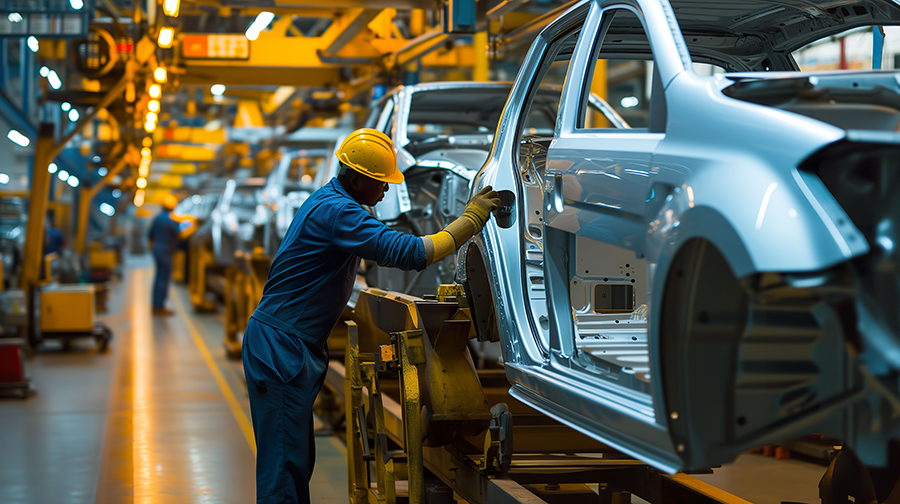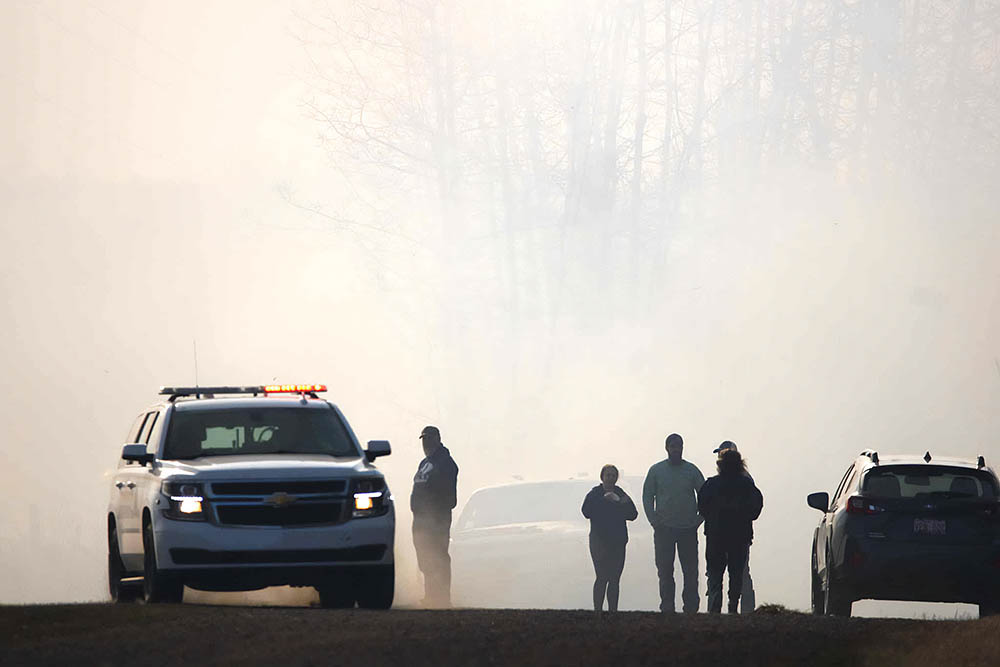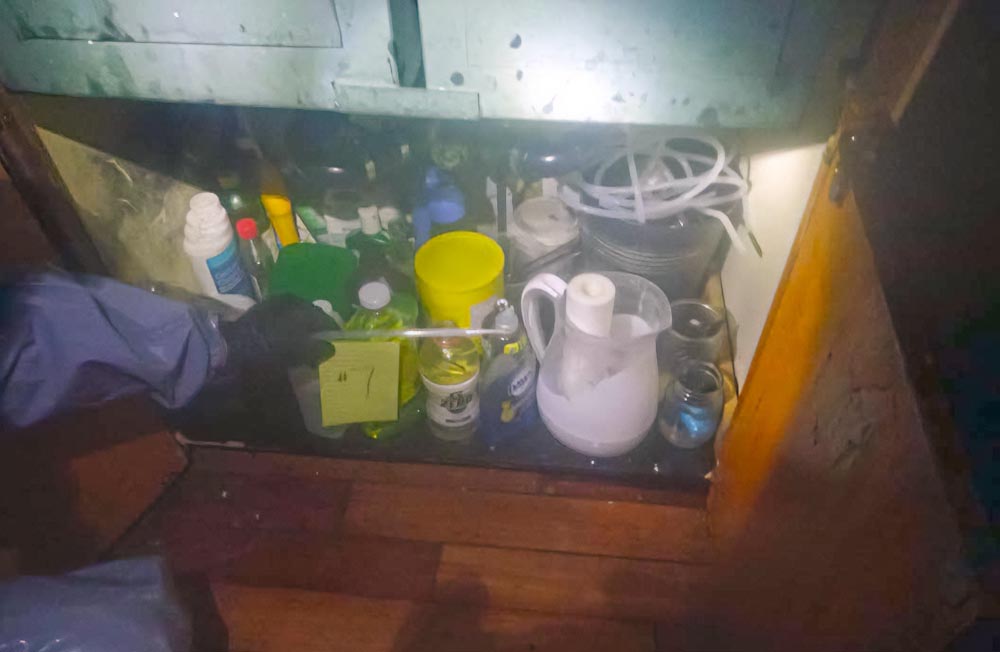John Chilibeck,
Local Journalism Initiative Reporter
Most ambulances rush to the scene, not the border.
But that wasn’t the case Monday, when Malley Industries of Dieppe transported seven newly built ambulances into Maine to beat Donald Trump’s tariffs.
The urgency of the situation and the confusion faced by some of Malley’s customers – Americans who aren’t even aware of how the tariffs work – is just one example of how people will face bewildering choices now that the president of the United States has decided to tear up global trade policies that nations spent decades refining.
Shortly after Trump imposed 25 per cent tariffs on much of the auto sector just after midnight Thursday, Prime Minister Mark Carney responded by announcing tariffs on cars and light trucks imported from south of the border.
Experts say consumers on both sides of the border will eventually pay far more for cars and light trucks, given the industry’s integrated nature.
“What really isn’t helping is the uncertainty and the way the rules are changing all the time,” said David Pargiter, the director of sales at Malley Industries, whose factory is near the Greater Moncton Roméo LeBlanc International Airport in Dieppe, on Thursday.
“As of last night, the tariffs kicked in on our vehicles. What that means we don’t know. There’s the caveat that U.S. content can be separated out. And there’s a lot of U.S. content in our vehicles. If we can government-certify that, we can reduce a lot of the effect, but we really have no idea. It hasn’t been explained to us how we can do that.”
Given the uncertainty, Malley took no chances, sending seven of its newest ambulances across the border ahead of the deadline, just in case. The company outfits ambulance interiors with special composite plastic, the hard material you’d typically see in your own car’s dashboard.
The family company originally started making camper tops for the recreational vehicle market in the 1970s but focused on making ambulances to service New Brunswick’s provincial fleet in 1999. It also makes vehicles wheel-chair accessible, primarily for the Canadian market.
In 2011, Malley expanded to serve the American market. Today, close to one-third of its ambulance sales – about 70 to 80 vehicles a year – go the United States. The ambulances for the American market must have a U.S.-built chassis. They’re built south of the border, shipped to Dieppe for outfitting, and then sent back.
Pargiter said his firm can pause work on vehicles destined for the United States and focus on its Canadian ambulances until governments sort out what will be tariffed. For the time being, none of the 70 or so of Malley’s workforce will be laid off.
But he’s reluctant to stop doing business with his American partners, who have exceptionally large fleets and represent a growing, lucrative market.
“This is another complication: A lot of my U.S. partners don’t actually know what the tariffs mean,” he said, half laughing, half exasperated. “There’s been a lot of education there, because, frankly, we’re getting better information than they are. We had to explain to them, ‘this is tax, levied on you, by the U.S. government.’ It’s the U.S. border guards that apply the tariffs.”
Canada announced Thursday it was hitting back against U.S. auto tariffs, slapping a 25 per cent retaliatory border levy on all American-made vehicle imports not covered by free trade deals.
In Ottawa, Prime Minister Mark Carney said Canada would largely copy the new 25 per cent U.S. border levies on foreign-made autos and components that aren’t covered by the Canada-U.S.-Mexico free trade agreement.
In the coming days, Canada will impose a 25 per cent counter-tariff on American car imports that don’t comply with the free trade deal. To be exempt from tariffs under the agreement, a vehicle must be made of at least 75 per cent of North American content.
Carney’s spokesperson Emily Williams said roughly 10 per cent — or 67,000 — of vehicles imported from the U.S. last year were not compliant with the agreement, for a total value of roughly $3 billion.
But unlike the U.S., Carney said Canada will not tariff U.S.-made vehicle parts if they cross into Canada as part of the deeply integrated U.S.-Canada-Mexico auto building supply chain.
Carney estimated the new border levy would be worth $8 billion annually, which he committed to redistributing to workers and businesses affected by the ongoing trade war with the Americans.
The effects of the new American auto tariffs were felt nearly immediately on both sides of the border.
In the U.S., American auto giant Stellantis temporarily laid off 900 workers in Michigan and Indiana because of slowdowns in the company’s Canadian and Mexican plants, Reuters reported.
Stellantis, the parent company of Chrysler, also confirmed Thursday morning that it was “temporarily pausing production” at its assembly plant in Windsor, Ont., starting Monday largely due to the new U.S. tariffs.
Ontario Premier Doug Ford said the U.S. tariffs on the auto sector are “clear as mud” and expressed hope that the Stellantis plant closure is a “temporary shutdown.”
Carney warned that Canadians would feel the pain before things got better, noting that Trump has promised further tariffs on “key” sectors that include softwood lumber and agriculture. Those are two major Canadian exports.
“Given the prospective damage to their own people, the American administration should eventually change course, but I don’t want to give false hope,” Carney said.
With a federal election campaign underway, Conservative Leader Pierre Poilievre promised to remove the federal sales tax on Canadian-made vehicles and called on provinces to do the same with their provincial taxes. He also committed to setting aside $3 billion for short-term credit lines and low-interest loans to workers and businesses affected by the trade war.
Canadian tariffs on U.S. vehicles would have a big impact. On some dealers’ lots in Canada, most of the inventory is American-made, including top sellers like Ford Motor Co.’s F-150 pickup.
Trump’s view is that tariffs will bring more auto manufacturing jobs to the U.S. in the long run. If the U.S. can break the bonds of a North American auto sector that has been tightly integrated for decades, he believes, it will import fewer cars. But if trading partners retaliate, it will likely export fewer, too.
The president said in an interview with NBC News that he “couldn’t care less if they raise prices” in response to tariffs. Consumers in the U.S. rushed to showrooms to try to buy cars before costs go up, with General Motors Co. reporting a 17 per cent jump in U.S. deliveries and other automakers also seeing gains.
A number of research groups have said new vehicle prices will jump by thousands of dollars because of higher production costs. There will be a domino effect through the industry — elevated prices for used cars, higher auto loan delinquencies and layoffs, according to Royal Bank of Canada economists.
“We’re heading into a world of mutually assured destruction if these tariffs are pursued by the U.S. and then Canada, and I’m hopeful there’s an off-ramp because the economic implications are just so, so serious,” said Brian Kingston, chief executive officer of the Canadian Vehicle Manufacturers’ Association, which represents Ford, GM and Stellantis NV in Canada. All three have assembly plants in Ontario, though Ford’s is currently not producing anything.
Manufacturers have been trying to move as many vehicles as they can into local markets to get ahead of trade war escalations, he said.
The average price of a new vehicle in Canada rose to $65,000 in 2024, according to the Canadian Auto Dealers Association, which has urged Canada not to retaliate against the vehicle tariffs.
John Chilibeck,
Local Journalism Initiative Reporter
The Daily Gleaner
– with files from the National Post and Financial Post


